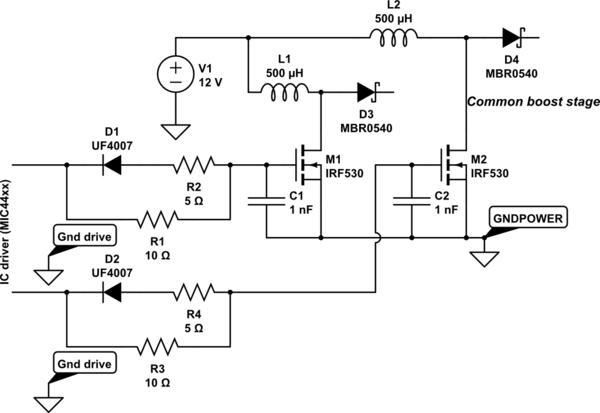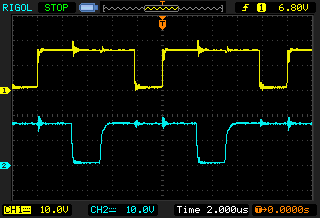I'm designing a gate drive and I saw in a reference design this circuit,
what would be the explanation for placing a capacitor between gate-source of the MOSFET (or IGBT)?
I've read that a resistor is also placed likewise to prevent sudden turn ons?
*Also though it says it's not mounted, I'm thinking there was a reason for placing it.

I did some test with:
- No capacitor
- 1nF capacitor
- 10nF capacitor
I added an idea of the schematic of what I'm testing, I'm using SiC MOSFETS, the power stage are two boost converters with common ground.
The driver ground is connected to the power ground of course.
This is what I found:

simulate this circuit – Schematic created using CircuitLab
![1nF capacitor[![][3]](https://i.sstatic.net/0bgoY.png) ]4
]4
I think it is highly related to the comments of Marcus Müller and the answer of JonRB.
Further explanation of this is appreciated.
Thanks


